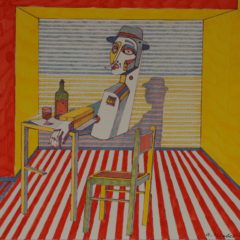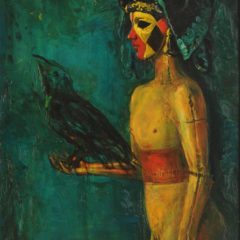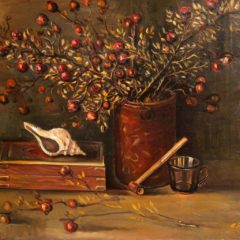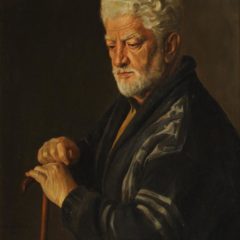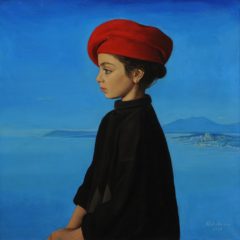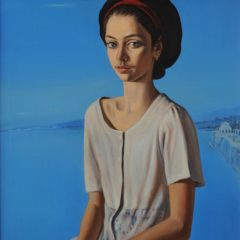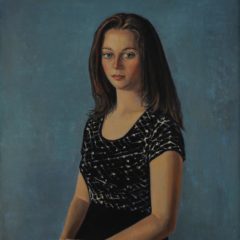Like father, like son; the case is strictly in point to Aram Issabekian, the son of Armenian classical painter Edward Issabekian. Aram Issabekian inherited talent and fine artistic taste from his parents Edward Issabekian and Arpenik Nalbandian, which he developed into his own distinctive style. This wonderful family had another prominent member, Dmitry Nalbandian (Aram’s uncle), an outstanding representative of the Soviet painting. It is amazing how Aram managed to avoid any influence and remained faithful to his inner voice and feelings.
When considering Aram Issabekian’s contribution and merit to painting, one necessarily states his professionalism, intellect and perfect knowledge of various painterly techniques. It means that the artist will masterly deal with any task, including challenges of the new times by creating everlasting values. The Poet, Promenade, the Witch, Naked Woman, Rose hip Branch, the Witches and other works best illustrate the point.
Having grown up in a family of classics of Armenian painting, the artist has always cherished the best examples of national realistic art, which had to be combined with current trends and preferences and bring new artistic qualities to Armenian art.
In this sense the genre of portraiture in Issabekian’s art stands out among his works. During the Renaissance every distinguished master considered it necessary to try their skills in portraiture, since the artist’s individuality was apparently realized in this genre. Today Aram’s self-fulfillment is an acknowledged fact. The Portrait of My Father, Paravon Mirzoyan and Renaissance are among the greatest achievements of Armenian painting; they have a special place in the treasury of Armenian portraiture as well. The portraits of the artist’s father and Paravon Mirzoyan are vigorously executed. The artist has achieved comprehensive psychological revelation of the characters’ inner and outer nature without needless effects (at a simple instant the artist has masterly rendered the enfeebled power of the patriarch’s eyes). On the other hand, in the Renaissance, Portrait of Anna and Varvara there prevail inner rhythm and lyricism. In pure expressive means and laconic composition, the impact of Hovnatanian is perceptible in slightly modified features, such as: bright blue colour scheme, transparent reflections and inner luminosity. In general, blue was the favorite colour and the symbol of eternity for our great masters of medieval art. So, aren’t the young girls as pure as crystal really the embodiment of eternity and beauty in Issabekian’s works? What mastery and a delicate sense of colour and form, harmony of artistic thought has the artist displayed in fine tonal contrasts.
Aram Issabekian proves that capacity of a true artist will never enfeeble, and that art is not a system of strict rules. Every subject-matter or a character dictates a specific means of interpretation and perception of beauty.
There is an absolute truth in art, which depends neither on the artist’s stylistic peculiarities nor modern trends that appeal to youth. It is the impression the spectator gets from the painting and its direct power of impact. Great masters of Armenian painting: M. Sarian, V. Sourenyants, G. Bashinjaghian, E. Tadevossian, E. Kochar, E. Issabekian and others had a completely different “handwriting”. Their successors: G. Khanjian, M. Avetissian, H. Galents, as well as contemporary talented artists H. Hakobian, A. Grigorian, R. Elibekian, R. Khachatrian have displayed a distinctive world perception, too. However, these artists of different views have come together for a common objective: to be acknowledged by their people and to reveal their imaginary world in the real one.
Aram Issabekian has a unique and honorary place among this amazing group of talents.
Hravard Hakobyan, PhD
Professor of Art History
